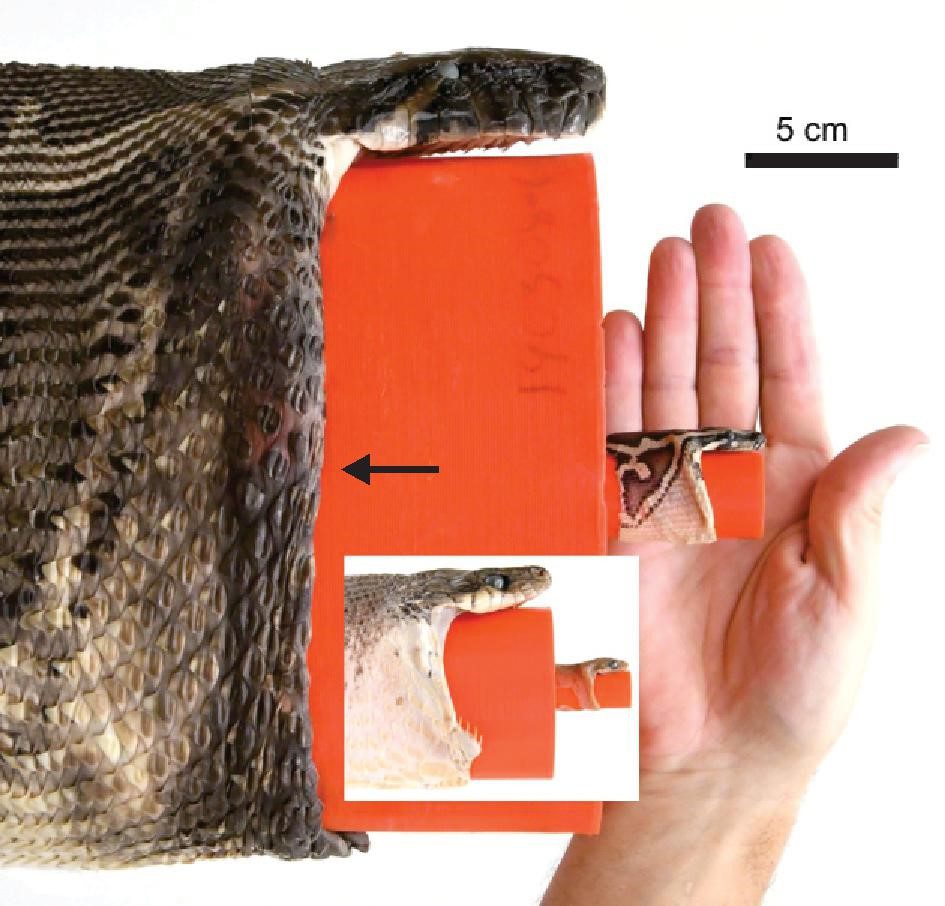As any video of a large constrictor chowing down on an impossibly large prey will tell you, snakes have absolutely massive mouths. A recent study set out to determine just how gaping these ginormous food holes really are.
The study investigated the potential gape size in relation to body proportion for Burmese pythons and found that it’s not the size of the snake that counts, it’s the size of the gape.
One of the largest species of snakes found in the world, the Burmese python can grow to an impressive length of around 3-5 meters (10-16 feet) and weigh in at around 90 kilograms (200 pounds). So, it’s no wonder they are sometimes seen in the wild chowing down on large prey like deer or even alligators.
Contrary to popular belief, snakes don’t have the ability to “unhinge” their jaw, instead their bottom jaw functions in two separate pieces, connected by stretchy ligament in the middle that allows this impressive expansion.

The Burmese python’s gape, witha brown treesnake inset. Image credit: Jayne et al., 2022, Integrative Organismal Biology
Thanks to a trusty organ called a glottis, snakes aren’t able to choke on their food either. Located inside their mouth on top of their windpipe, this organ can move upwards while the snake is eating, meaning no matter the size of prey, their windpipe will never be obstructed.
For the study, 37 Burmese pythons were collected from southern Florida, where they are considered a highly invasive species. In total, 43 Burmese pythons were euthanized for the study.
Using a variety of 3D-printed plastic probes, the largest of which was 22 centimeters (9 inches), researchers measured the maximum gape of the pythons, and compared it to the mass of the specimen to establish a relationship between mass and potential size of prey consumed.
A snake measuring 4.3 meters (14 feet) long and weighing around 59 kilograms (130 pounds) was the only one in the study that was able to tackle the largest of the probes. Researchers observed that at full stretch, the lower jaw mandibles appeared nearly vertical in the lateral view.
While Burmese pythons have the ability to consume prey in excess of their own body weight, it can be a life-threatening venture.
Consuming and digesting large prey is costly to a snake’s valuable energy levels, as well as making it difficult to make a quick getaway. Additionally, because of their slow rate of digestion, large prey can start to rot while they’re digesting it leading to infection and potentially death.
The study is published in Integrative Organismal Biology.
Source Link: How Do They Do That? Burmese Pythons Open Wide For Super-Size Prey